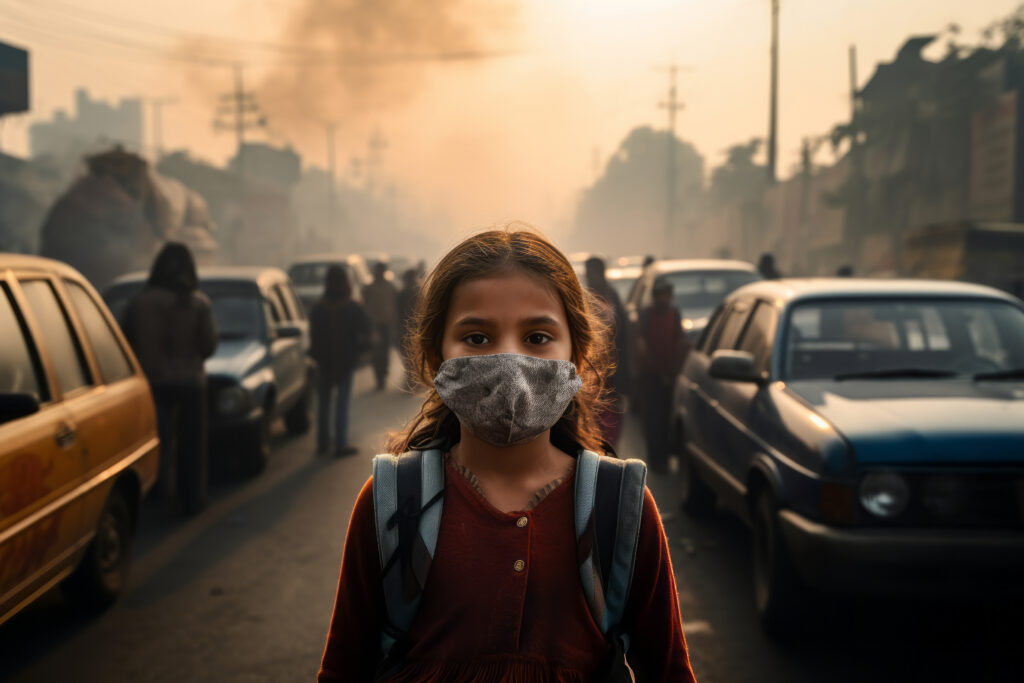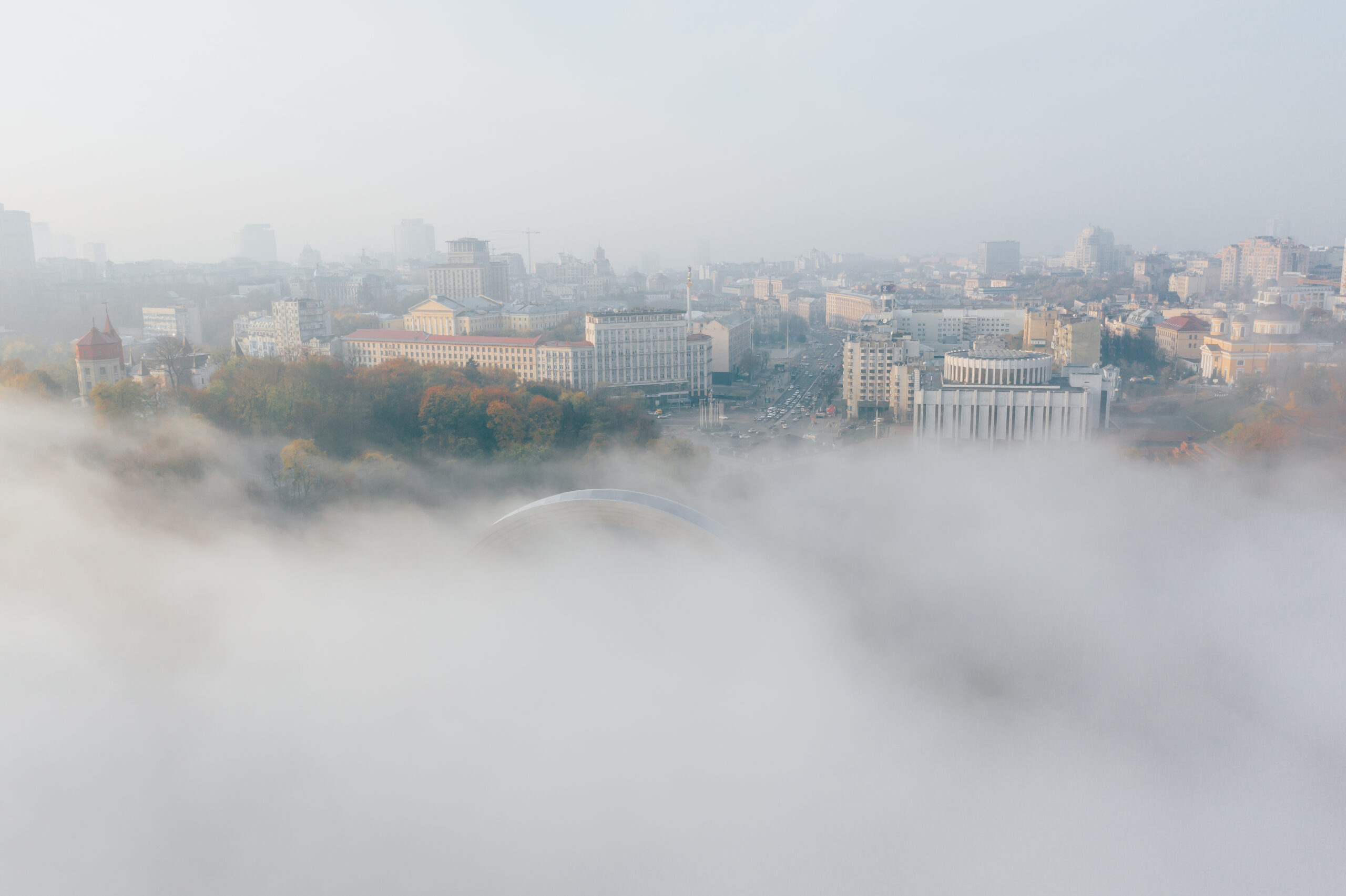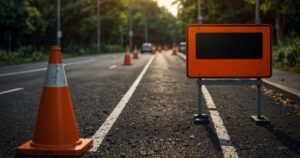Delhi Air Quality Plummets to ‘Very Poor’: Toxic Smog Triggers Health Crisis as Residents Struggle to Breathe
4 min read
Stock
Delhi is once again experiencing a poor quality of air as the winter season approaches. This deterioration can be seen as the “Air Quality index” (AQI) has escalated into the “very poor” classification. People in the city are suffering from a number of health issues due to the contaminated atmosphere. These include respiratory issues, sore throat, and irritation of the eyes. Reports assert that areas like Anand Vihar and Akshardham in Delhi have AQI figures exceeding 300 which is dangerous for human health.
What makes it difficult to breathe in Delhi air?
With the arrival of winter, Delhi’s level of pollution jumps up a notch, and this happens every year for a number of reasons such as:
- Stubble Burning: Farmers in nearby states of Punjab, Haryana and Uttar Pradesh are known to burn remnants of crops (stubble), after the harvest season. This generates a huge amount of smoke and fine particles in the air. Crop burning is widespread even after government protests that it leads to seasonal pollution in Delhi.
- Automobile Pollution: Inadequate road space and high population density mean that every square mile in Delhi has well over a dozen automobile vehicles on the road. Diesel-burning vehicles including buses, trucks, and other vehicles are known to release pollutants like nitrogen oxides (NOx) and fine particulate matter (PM2.5 and PM10).
- Construction activities: And lastly, as new construction projects continue to take place around the city, dust is released which adds to the pollution.
- Temperature Inversion: Winter is characterized by enhanced potential for the phenomenon known as temperature inversion where cooler air stays beneath a layer of relatively warmer air, causing pollutants to come up close to the ground and get trapped in the air. The cause is low temperature and slightly wind, especially in the winter season causing warm air coming from above the cooler air. A warm aloft layer that cools down the ground level contributes to heavy and smog” which is difficult to disperse there.

Health Impact on T Residents
Air politics of Delhi is a totally different ball game. Cases of serious air pollution have approached an epidemic situation. An estimation of the world health organization states that the death toll cases owing to high pollution areas have graphed out to around 41% 93 in the last few decades. If these eclipsing figures are real then easily for every 4 amongst a household number stated in Delhi NCR 3 get exposed into hazardous pollution level. Inflation rate wherein about 75% households have been built on claims of fortified pollution level and from the upside exposure up with health issues in the last one year. Sudden increase in at least a tenor of cough, wheezing, reduced breath efficacy or perceiving conditions similar though not entirely asthma. Even more concerning are vulnerable such as children, the elderly and those who are unwell, already having an intricate baseline of conditions.
More then greater proportion of the residents using preemptive methods like air filters or portable air purifiers, selling anti pollution masks and some boosters sirs. But it does not matter, So many thought but up to 40% when surveyed 90-100 % and with those claiming runny noses. Many feel that effective air purifiers for habitual overuse of the appliance not only strengthens them these airborne irritants.
Government Measures and Future Outlook
The problems are numerous and major more than government is needed to tackle up Violence from both ends cannot paralyze industrious movement. Here exactly Graded Response Action Plan measures wise and so forth along with AQIs over bursting level that keeps it up 300 at stage four. At stage three there is only one fan who shall be speed at smokey outbreaks. At this stage, the use of diesel generators shall be banned, several construction activities shall be put on hold as well as limiting the use of certain polluting vehicles.
Notwithstanding these measures, experts have warned that the worst is still expected, this is because the pollution levels are expected to peak in November, the month when stubble burning is at its highest and when a festival of lights and firecrackers add insult to injury. Additionally, the effects of global climate change are also making this worse as the balance of cleaner air periods seems to be tipping toward the extremes.
How to Protect Yourself
While the more pressing problems are being handled by the government and NGOs alike, the residents can take steps to safeguard themselves for this hazardous period:
- Avoid outdoor activities: Try to stay indoors as much as possible and limit physical activities during periods when efficiency is lowest, i.e., early evenings and in the mornings.
- Use air purifiers: It is advisable to use air purifiers designed in such a manner as to filter contaminants that cannot be seen by the human eye.
- Wear N95 masks: Take proper measures when going outdoors by donning particulate matter filters that eliminate the chances of the wearer inhaling particles PM2.5.
- Boost your immunity: It is suggested that such people consume a mixture of fruit and vegetables that are known to strengthen the internal systems of the body including the lungs.
Conclusion
For the residents of Delhi, it is about that time of the year where they can actively combat air pollution; with hopes that drastic measures will be in place all year round. Till such time, it is vital for all the residents of the area to be alert and be proactive in every possible way to safeguard their health as toxic air returns to the capital.





